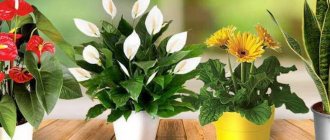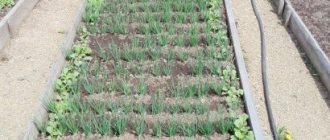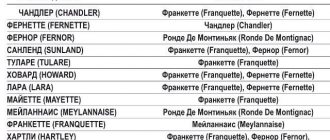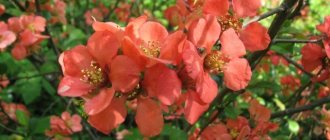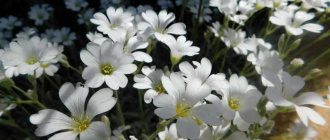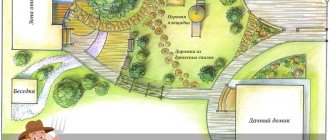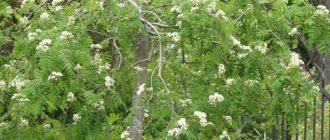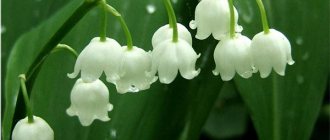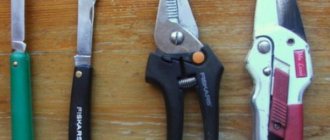0 725
Quince is no longer an exotic plant; it is often found in our area. Its fruits are not only tasty, but also healthy: they contain many vitamins and microelements. Fruits can be eaten “straight from the branch”, made into jelly, jam, jam, used as a side dish for meat and cooked into compotes. And the tree itself is not difficult to care for. If you decide to plant this crop on your site, then keep in mind a few simple rules.

Preparing the soil for quince
How to plant quince in our difficult climatic conditions, if it is a southern heat-loving crop? There is undoubtedly a certain risk, because it comes from Transcaucasia and southern Asia; it is good to grow it in southern Europe, where winter temperatures practically never drop below -8 degrees. But today there are varieties that can survive -37 degrees; in the middle zone and even further north it is not difficult to grow early-ripening frost-resistant varieties whose fruits ripen in September.
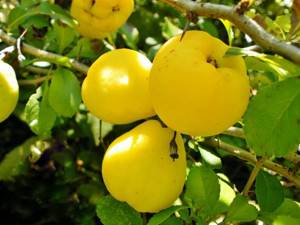
Quince, planting and caring for which requires knowledge of its preferences, is distinguished by its tolerant attitude to heat and drought; it can withstand a thirty-day flood, and even recover after part of the shoots freeze. It can grow on any soil - red soil, black soil, sandy loam and loam will withstand it. On light sandy loam soils, it will enter the fruiting period earlier, but the fruits will not reach their maximum, will be very hard, and the tree will live less than on heavier soils. The longest life span of a tree, up to 60 years, is observed if the quince grows on fertile loams; it begins to bear fruit in the third, usually fourth year of life, and by the eighth to tenth year the harvest will reach its maximum.
Every year, without any frequency (under good conditions), the tree can produce a harvest for 30 - 50 years. At first it grows quite quickly, and when it reaches adulthood, it slows down and can produce from 40 to 100 kg of fruit annually. For this reason, it is worth preparing the soil exactly the way this culture loves.
If the soil on the site is light, then it is worth adding clay, humus, and peat. Peat gradually oxidizes the soil, quince does not like this, but peat perfectly retains moisture and enriches the soil, so it is worth adding wood ash periodically - this will keep the acidity at the desired level and at the same time fertilize.
Before planting quince, you need to dig up an area of at least 10 square meters to the depth of a spade bayonet, at the same time adjust the soil structure and add humus or compost, superphosphate and potassium salt. After this, the soil in the prepared area is watered and left to settle.
Quince: planting and care
Large, aromatic, hard fruits similar to apples or pears, called “quinces,” are often found on sale.
It has many beneficial properties, but for maximum positive effects the plant must be provided with good conditions for growth and development. Let's try to find out what quince is and how to properly care for it. In fact, it is very similar to apple and pear trees, since it belongs to the same family with them - Rosaceae. However, quince is a separate genus of plants, including several species. In gardening, the most popular are the common and large-fruited quinces.
When to plant
Like all large trees, quince is planted in spring or autumn. In the fall, you need to have time to do this so that before frost the seedling gets used to the new place and forms, if new roots, then at least callus. This usually takes at least two weeks, which means you need to determine the time correctly so that the tree has these two weeks before the arrival of real frosts.
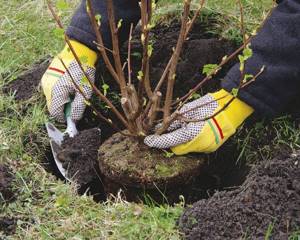
In the spring, the tree is planted while it is dormant and the buds have not yet fully awakened. But the weather should already be warm; returning frosts can cause serious harm to the new settler. Most gardeners do this in April; the weather itself will tell you exactly when to start planting. The seedling should not wait too long for planting, especially with an open root system.
It is advisable to buy a one-year-old seedling with an open root system for planting, then when choosing, you can carefully examine not only the above-ground part of the plant, but also the roots.
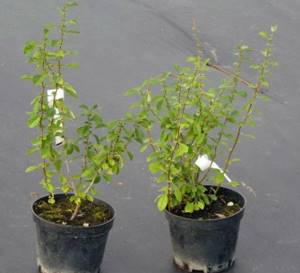
You need to pay attention to the buds, even before they wake up, it is quite possible to see dead or damaged ones, you can allow the presence of such shoots at the ends, which will then be cut off, but at the base of each shoot there should be at least 3 - 4 healthy, fully formed buds. The roots must be healthy and well developed, without damage or dried parts. When cut, a healthy root is always light in color. Seedlings older than one year are usually sold with a closed root system, it will not be possible to examine it, but if they are in the earthen coma in which they grew, then such a seedling should take root well in a new place.
Quince: harvesting and storage
The fruits of the common quince practically do not grow all summer and begin to ripen only at the end of August. They are not afraid of frost, so they need to be harvested at the end of October, allowing them to ripen well. For long-term storage of the crop, quinces are harvested manually, cutting or removing the fruits, preventing them from falling.

Quince is the ideal tree for your garden. It is not only useful, but also very decorative: its foliage is not susceptible to diseases and remains beautiful all summer, and in the fall it acquires a bright yellow color and falls off late. This plant is also a good honey plant.
Planting in autumn
If the quince is supposed to be planted in the fall, and this will be September - October, then it is advisable to prepare the site in the spring, but it is permissible to dig it up, clear it of grass and roots, apply fertilizer, and water it in July - August. The soil must stand for at least a month, especially if not only fertilizers were applied, but the soil structure was corrected.

Immediately before planting, they dig a hole 40–50 cm deep and 60–100 cm in diameter. The quince root system develops in width; the roots do not grow deeper than one meter, but their diameter can be several times greater than the width of the crown, which is why such a large place is being prepared. The diameter of the hole for the seedling should be 10–20 cm larger than the existing root system.
Lay clay at the bottom of the pit, then earth mixed with humus (or compost), superphosphate and wood ash. This composition should occupy at least one third of the pit; ordinary garden soil is poured on top. The roots of the seedling are placed on the ground and carefully covered, lightly compacted, trying to ensure the greatest possible contact of the soil with the roots, but not to damage them. The grafting site should be about three centimeters underground. Having completely filled the hole, they compact the earth around the trunk, water it, and mulch it. For watering you will need at least two buckets of water. Since this is happening in the fall, with gradual cooling ahead, you can immediately lay a thick layer of mulch - at least 10 cm. For mulch, use peat or compost. Mulch the entire area of the ground above the roots and a little more to protect them from future frost, and not just retain moisture.
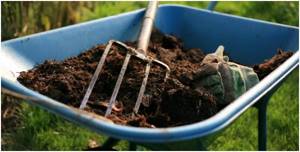
After autumn planting, the branches are pruned only if there are broken ones; the main pruning will be done later, when the tree survives its first winter.
Feeding and watering quince in a summer cottage
Quince responds to abundant watering by increasing productivity. Therefore, during the growing season, the plant needs to be well watered at least three times: before flowering - for better ovary, in June - for the development of the tree and fruits, at the end of summer - for fruit filling. For one watering, you need to use at least 400 liters of water, and for a large tree - up to 800 liters, so that the entire circle around the trunk is well moistened.
Common quince is also favorable to fertilizers and fertilizing. In the spring, when loosening the soil, nitrogen fertilizers of 25-30 g per 1 m² or complex mineral fertilizers of 50 g per tree are applied along the tree trunk. If it was not possible to fertilize the quince in the spring, then until mid-summer you can fertilize it with nitrogen fertilizer, diluting 10 g of fertilizer in 10 liters of water (per one hole dug around the perimeter of the crown). You can also feed the tree with a solution of slurry diluted in 5-10 parts of water.
After fertilizing, the quince should be watered generously so that the fertilizer is evenly distributed. In the fall, apply potassium, phosphorus 20 g per 1 m² and organic fertilizers in the form of mulch along the tree trunk, then dig up the ground with half a shovel. Together with autumn and winter precipitation, these fertilizers will gradually penetrate the soil and nourish the quince.
Help in the first years of life, how to properly tie a quince
You can purchase seedlings where the quince is grafted onto a mother plant and will grow in the form of a tree, although most often it grows as a bush.
In order for the quince shrub at your dacha to have a beautiful vertical shape, it must be tied up when planting.
The support is installed at the bottom of the hole in which the quince is planted, and should be 1-1.5 m higher than the branches of the seedling. All branches must be tied to the support, and in such a way that there is a small gap between them. As the seedling grows, the fastenings should be moved higher so that the quince does not bend and break. When the seedling gets stronger and begins to bear fruit, the support is removed.
Features of quince pruning, how to do it correctly
With the onset of autumn, the plant does not shed its leaves for a very long time, so it is better to prune quince in early spring, before the buds open. All damaged and frozen branches must be removed. Also, for a good harvest, you should shorten the growth of last year - branches up to 50 cm by 1/3, longer ones by 1/2, while vertically growing branches must be shortened. It is also necessary to ensure that the middle of the crown is not thickened and is well lit, for which excess branches are completely removed.
Quince propagation
Propagating quince is quite easy, and this can be done in different ways. The easiest way to propagate is by cuttings and root shoots. Cuttings for planting are cut in the spring, when the leaves have already bloomed. Annual cuttings are ideal for the role of planting material, preferably from the lower branches of a tree, which can be specially left when pruning. To plant, there should be 5-6 buds on the cutting (the lower cut is made immediately below the bud, and the upper cut is made at a distance of 2-3 cm from the upper bud, so that when the cutting dries, the bud remains alive). The leaves on the cuttings are completely removed.
Planting in spring
For spring planting, the site is prepared in the fall. After removing the fallen leaves, the intended area is dug up, freed from the roots of perennial grasses, fertilizers are added, the acidity and structure are corrected, if necessary, watered, and in winter they try to shovel snow there. In the spring, when the earth has already warmed up sufficiently, the area can be, if not dug up, then at least loosened. And just before planting, they dig a hole, fill it with fertilizers and plant the tree.
The area around and the pit itself should receive a lot of natural nitrogen fertilizers, the next application of organic matter will be in a few years, and the first years of the quince’s life are characterized by very rapid growth. Mineral fertilizers (reasonable amounts) are applied several times annually, but the tree is fed with organic matter every 2–3 years. That’s why it’s so important to prepare the soil and apply the right amount of fertilizer when planting.
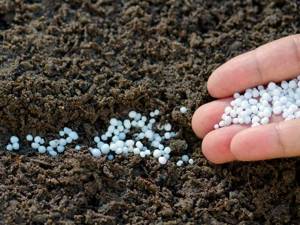
The main pruning of quince is done in the spring. Immediately after planting, you need to shorten the shoots and outline the skeletal branches, the formation of which will occur during the first years of the tree’s growth.
We grow quince in our dacha
Just planting a fruit tree is not enough. It is necessary to regularly monitor and care for the plant, water, dig and fertilize the soil. Only through constant daily labor will it be possible to obtain the greatest harvest - large, ripe and juicy fruits. Therefore, here we will try to tell you and reveal all the subtleties about how to control and care for the fruit tree - quince.
Quince is a deciduous tree up to 4 m high, a trunk up to 50 cm wide and with oblique, rising branches. This is a low-growing, early-fruiting plant with an annual yield with a huge content of useful substances in the fruits. Thanks to this, quince has long been subject to research and selection, and therefore in our country you can often find a variety of varieties and hybrids aimed at high and high-quality yields.
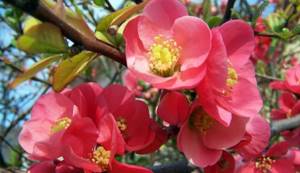
The most valuable are the self-fertile varieties that do not require dust from insects. They can be grown in single and single-varietal plantings, but if there are other quince varieties nearby and your tree succumbs to cross-pollination, the harvest will be much more serious.
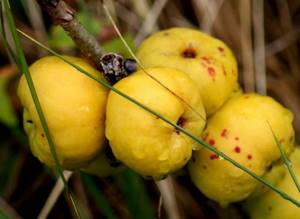
The best “neighbors” of a tree
Quince occupies a special place in the garden, if only because it needs a lot of free space around it. A not too large tree with a crown of about two meters in diameter grows roots that cover an area with a diameter of 6 - 8 meters. Any plants planted nearby will take away nutrients from the quince, which will immediately affect the quality and size of the crop. Therefore, it is planted no closer than 5 meters to other trees, and empty soil remains underneath it so that other plants, even if they are not afraid to grow in the shade, do not disturb the quince roots located close to the surface.
The heat-loving crop needs a lot of sunlight, so there should be no buildings or tall trees nearby that would shade it. They find an open place for the quince, a southern slope would be suitable, and if there were some other protection from the cold north wind, this would be an ideal place. In winter, you need to install shields to retain snow; the larger the snowdrift around the tree, the better it will withstand frost.
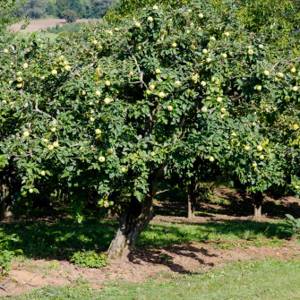
Sometimes a hedge is made from quince, planting plants at a distance of one and a half meters from each other. Such crowding creates not very comfortable conditions, but there is an opinion that it is in such dense plantings that trees produce the most useful fruits, although they will not be too large.
Quince is a non-self-fertile crop, which means that to obtain a harvest it requires cross-pollination of flowers of different varieties. Modern varieties are not only resistant to frost and diseases, they are also declared by breeders to be self-fertile. But the harvest will undoubtedly be better if a different variety of quince grows on the same plot (or on a neighboring one); such a neighbor will be the most desirable. If this does not work out, then you need to graft a branch of a different variety onto the tree. It can be grafted onto a pear rather than a quince; these related crops become an excellent rootstock for each other. The proximity of pears and apples, contrary to the wishes of many gardeners, is not a salvation for non-self-fertile quince varieties.
Methods of propagation of Chaenomeles japonica
Japanese quince is propagated by seeds and vegetatively (layering, green cuttings, root suckers).
Japanese quince seeds need stratification, so seed propagation is conveniently carried out in the fall. Freshly harvested seeds are sown in a separate bed. Over the winter, the seeds undergo natural stratification and germinate in spring. In the second year, grown seedlings are pruned to stimulate growth and transplanted to a permanent place. Transplantation can be carried out in spring and autumn. Seed propagation is convenient if you need planting material for fencing an area or decorating.
To preserve the properties of the mother variety of Chaenomeles japonica, it is better to propagate the crop vegetatively. Vegetative propagation of Japanese quince is carried out in the same way as on berry bushes.
Growing from seedlings
The tree grows quite crookedly, so when planting it is important to build a support for the trunk. The support is removed when the trunk is well compacted. Apart from the obligatory support, planting quince seedlings is no different from planting young trees of other fruit trees.
Planting and growing quince begins with choosing a seedling. The root system requires special attention - all shoots must be intact without damage. Pay attention to the pillar: damaged bark may indicate the presence of disease.
Planting quince includes the following work:
- Preparing the pit. The size of the hole depends on the dimensions of the root system. The pit should be such that the root, when straightened, easily fits inside.
- A peg is installed in the hole - the future support of the young animals. The support is placed so that when planting it is as close as possible to the trunk of the plant.
- It is advisable to flavor the soil with organic matter and minerals, digging them in with a thin ball of earth.
- Directly planting quince: insert the seedling and dig it in, after that the young growth is tied up and watered.
You can do the planting yourself or delegate the initial care of the garden to our professional gardeners. They will be happy to delve into your garden and help update your plot with new fruit plants.
Resistant varieties of Japanese quince for the Moscow region
Taking into account the climatic and soil specifics of the Moscow region, experts advise carefully choosing one or another variety of this plant. For the Moscow region, Japanese quince varieties should be distinguished, first of all, by their resistance. Therefore, you should pay attention to interspecific Chaenomeles hybrids and selection varieties.
For example, a Japanese quince called “Zubutlinskaya” would be a suitable option for residents in the Moscow region.
It bears large fruits, is frost-resistant and resistant to various diseases. In addition, the plant is not afraid of northern winds. And, by the way, very tasty jam and juices are made from the fruits.
In addition to the named variety, you can also experiment with growing Japanese quince, which is called “Nicoline”.
Because it is highly tolerant of low temperatures and produces lush scarlet flowers, this Chaenomeles species would be an interesting choice for your landscape design.
Another frost-resistant option, which has a beautiful soft pink color, is the “Pink Lady” variety you already know.
An adult plant reaches no more than 1.2 m.
How to propagate Japanese quince by offspring
Since the plant always produces a lot of root shoots, you can use them too. Experienced gardeners have long known how to propagate Japanese quince in a similar way. To do this, shoots are selected that are approximately 10-15 cm long and at least 0.5 cm thick. Be sure to ensure that the offspring have a well-developed rhizome system. Then they are planted vertically and watered regularly so that the soil maintains the necessary moisture. Next, they resort to the mulching procedure that is already familiar to us - they fill the soil around the plant with wood chips, shavings or humus. True, chaenomeles grown in this way has one drawback: it was noticed that the plant produces smaller fruits than its counterparts propagated by seeds or cuttings.
But there is also a special advantage in this situation: with this method of reproduction, Japanese quince very often then spreads in different directions and at the age of 20 years can occupy an area of up to 2 m2. This is very beneficial in cases where you want, for example, to hold the soil on some slopes.
Growing Japanese quince in the Moscow region: planting, care and pruning
A very valuable feature of the Japanese Chaenomeles is that it loves to preen itself. True, gardeners are in no hurry to approach the plant’s thorns. They do this only when they are armed with thick gardening gloves - leggings.
Japanese quince really needs sanitary pruning in the spring: during this period, all dry shoots that have died from frost should be carefully removed. To do this, you can use ordinary well-sharpened tools - a garden saw and pruning shears. After the procedure, be sure to treat the cut areas with garden varnish.
But how to prune Japanese quince if it is associated with the formation of a bush, which begins at the age of 4-5 years?
Firstly, the procedure is carried out in early spring. Every year, part of the root growth is cut out.
Only 2-3 offspring are left for further growth. It is desirable that these are horizontal shoots that are located at a height of up to 40 cm from the ground. Other shoots that spread along the ground or grow vertically are safely removed.
Another type of pruning, which is indicated in the description of planting and caring for Japanese quince in the Moscow region, is a rejuvenating procedure. It is used when the plant reaches the age of 8-10 years. Gardeners understand that the time has come for this pruning when the annual growth is reduced to 10 cm.
The procedure is carried out as follows: the bush is thinned out, all thin and weak branches are removed, and only a dozen strong shoots are left.
Look at the photos of the beautiful varieties of Japanese quince, the description of which is presented above - for them, the worst threat is a pest such as aphids:
If you find these monsters on plants in your garden, immediately use special means.
An equally vicious and dangerous enemy for Chaenomeles is damp, cool weather, which causes the manifestation of many fungal diseases:
- if the plant begins to experience necrosis and numerous spots appear on the leaves, this is a sure sign that the Japanese quince may soon die;
- in cases where chaenomeles is affected by cercospora, all kinds of brown spots appear on it, turning pale over time;
- brown spots are a sign of ramulariasis.
What then needs to be done to save the plant?
It is urgent to use the most effective remedy - spray the bush with a solution of fundozol (0.2%) or use a copper-soap liquid, which is made by adding 100 g of copper sulfate to 10 liters of soapy water.
These products are considered quite dangerous, so there is another option: you can make a tincture from onions, and for this you need to infuse 150 g of husks in 10 liters of water for 24 hours. After filtering the drug, it is sprinkled on the plant throughout the whole summer every 5 days.
